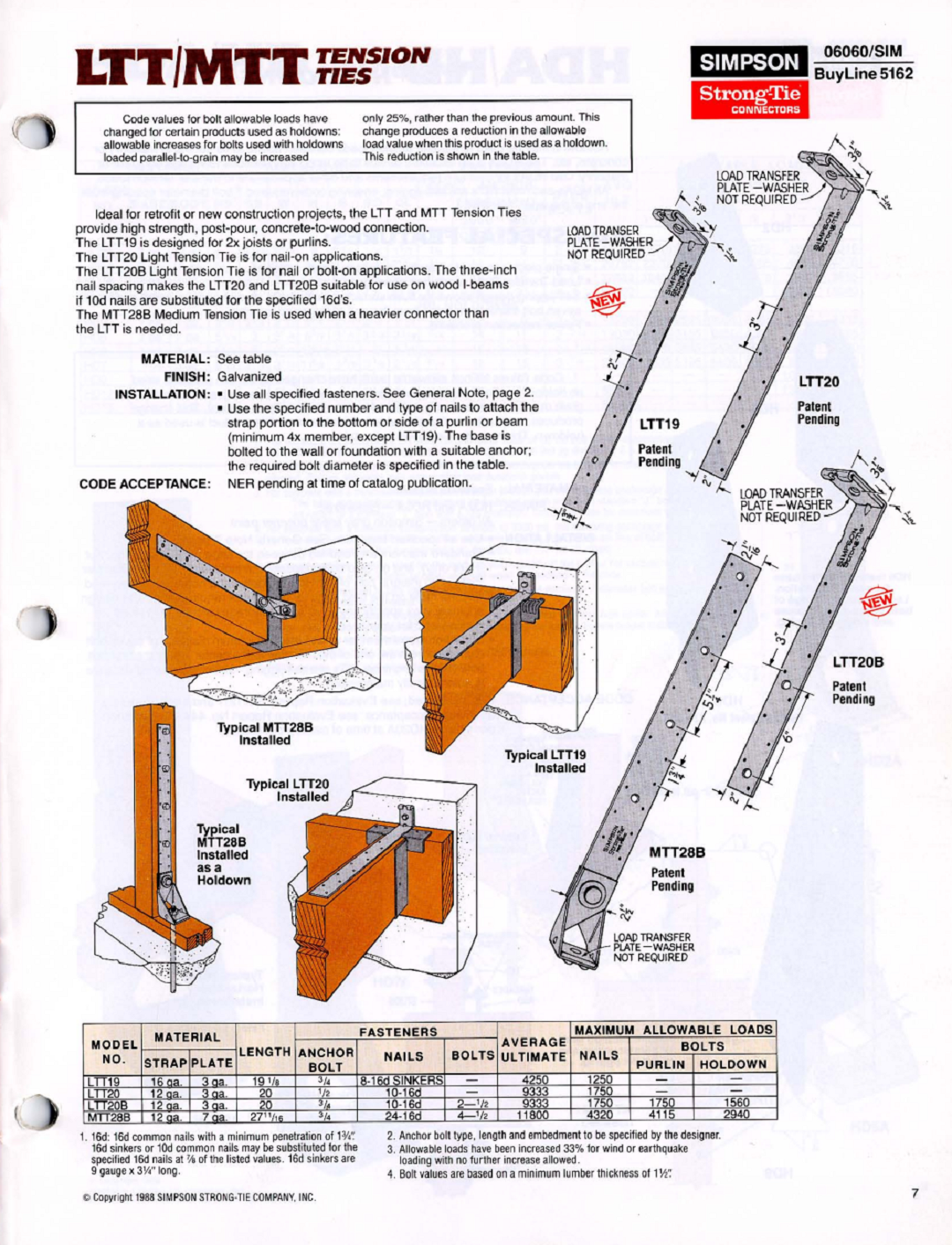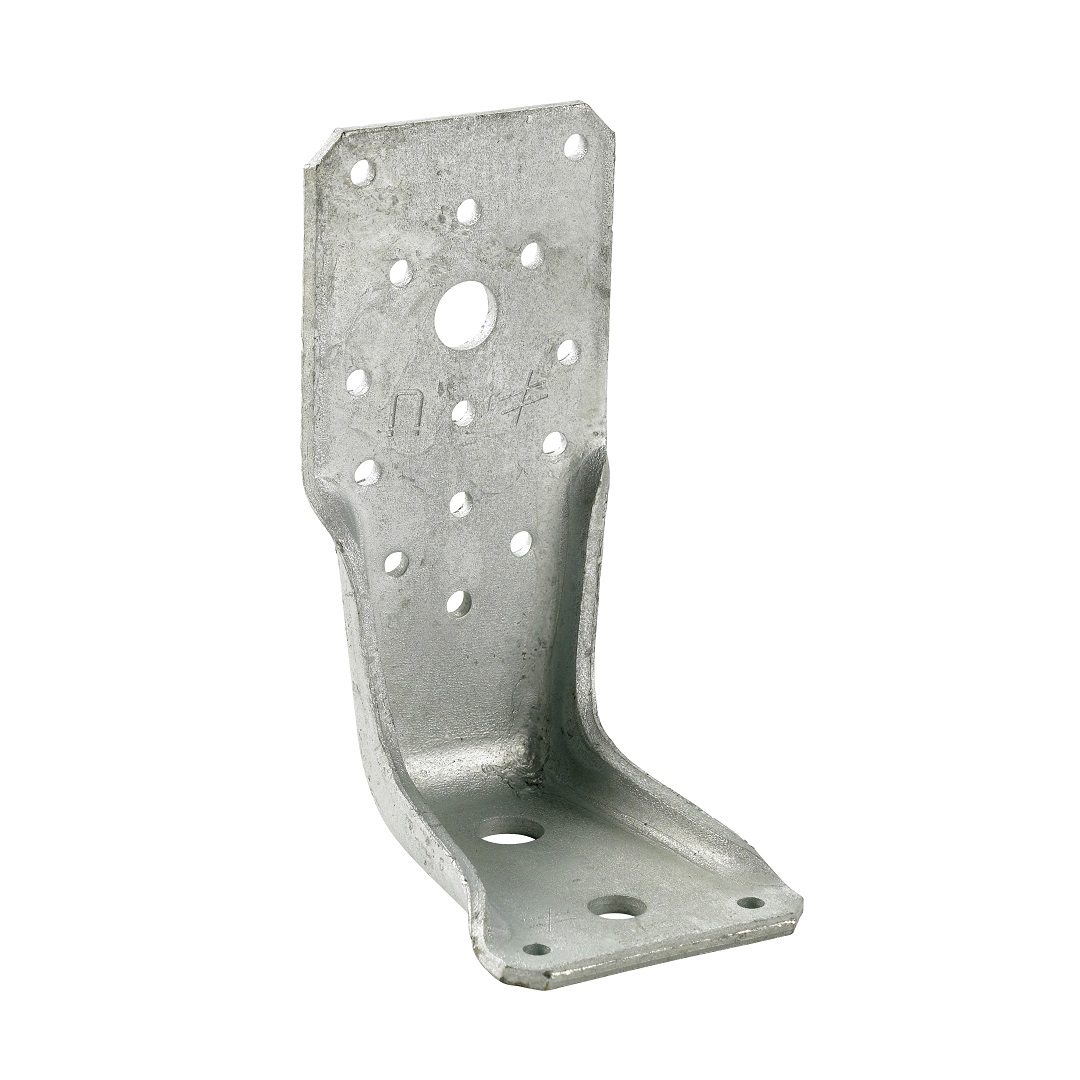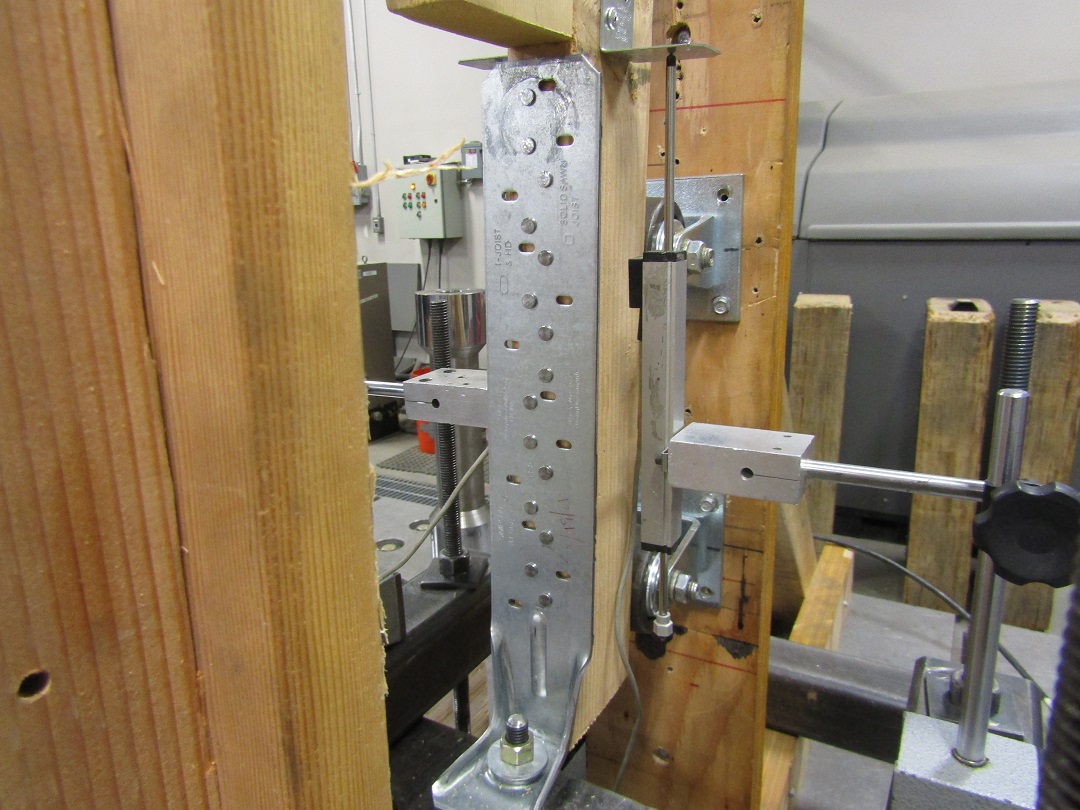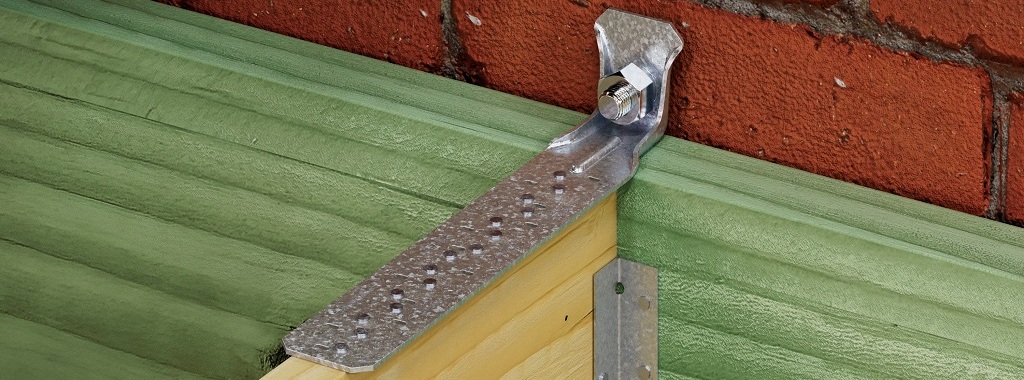It would give you an incomplete idea of the new LTTP2 light tension tie if we didn’t first discuss the original LTT series. The LTT20 tension tie first appeared in our 1987 Connectors for Wood Construction catalog as a post-pour, wood-to-concrete connector. The LTT20 installed with nails only, but we realized we could add holes for bolts, so the LTT20B gave the customer the option to use either nails or bolts. Around the same time, we created the narrower LTT19 for installation on 2x joists or purlins. For more than 30 years, the LTT19 and LTT20B quietly anchored walls to roof diaphragms or shearwall posts to foundations.

We manufacture the LTT in a three-step process — make the strap, make the load transfer plate, and then press the two together. Over the years, we tried different options for creating a one-piece design, but it was difficult keeping new designs as low profile as the current LTT was. Then, a few years ago, one of our product managers was visiting one of our German offices and spotted an angle connector on display in the lobby.

The AKR angle gave us some inspiration for a new version of the LTT manufactured in one piece. The nail pattern was not quite right for installation on an I-joist or a single 2x joist, but the seat shape was relatively low profile and had the stiffness we needed. While adapting the European design to meet North American requirements, we also developed an extrusion on the anchor hole that improves load transfer in the holdown seat.

(If you are interested in how we test holdowns, see this blog post for a detailed discussion.)
So all we needed to figure out was the nail pattern that fit and achieved the required loads. We developed two nailing patterns: obround holes spaced 3″ apart for I-joist purlins and square holes spaced to accommodate the narrow face of 2x solid sawn purlins. The LTT2P can also be installed on the wide face of a minimum 2×4 stud for holdown applications.

We load rate the LTTP2 with ½”-, 5/8″- and ¾”-diameter anchor bolts and nails and Strong-Drive® SD Connector screws for flexibility in specification. Regardless of which anchor or fastener you select, the LTTP2 allowable loads exceed the original LTT19 and LTT20B loads, so engineers can confidently switch from the original. The LTTP2 is code listed in IAPMO UES ER-130.
For more information about the LTTP2 light tension tie, visit our product page. And let us know how you’re using this new tension tie in your projects.


